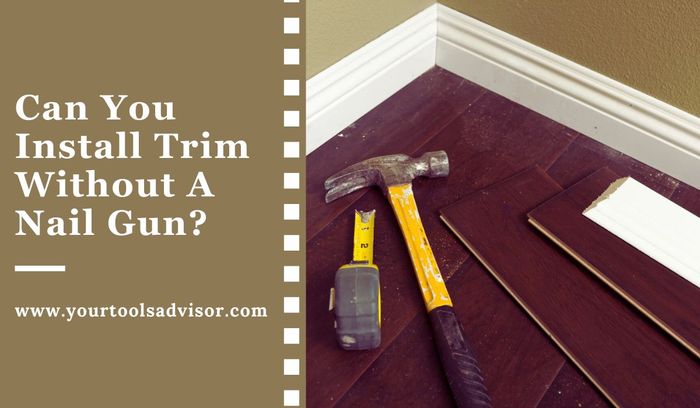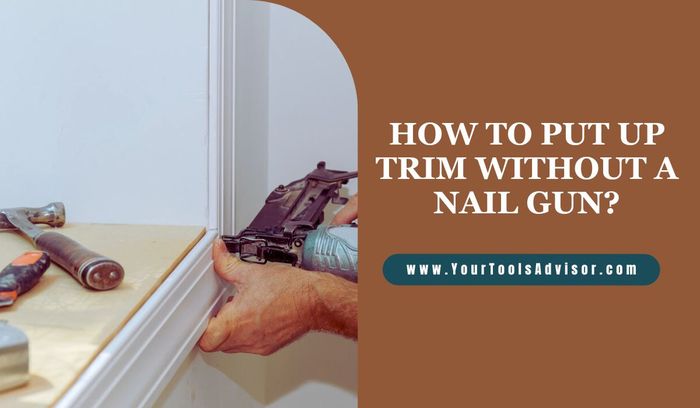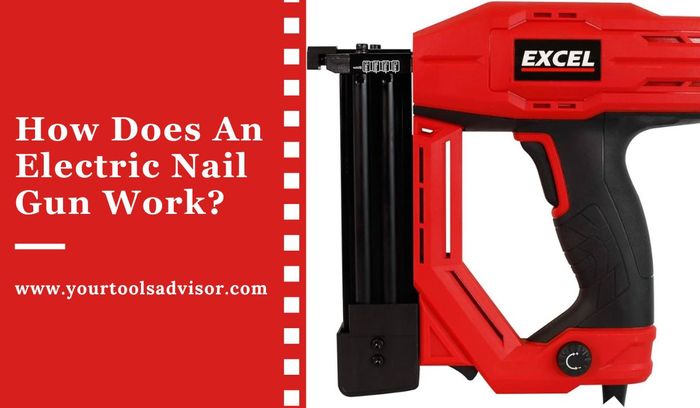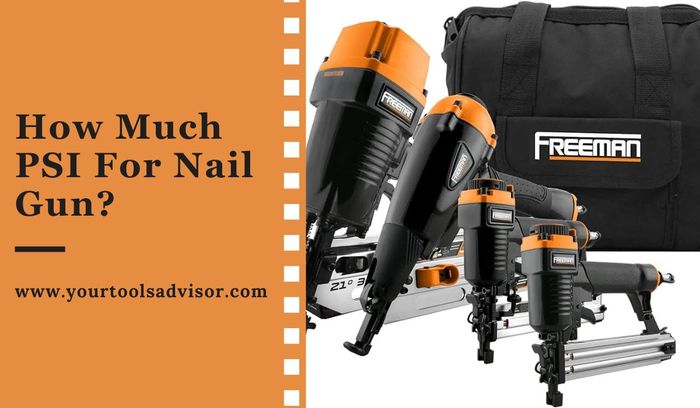In the world of home improvement, the satisfaction of completing a project with your own two hands is unparalleled.
When it comes to installing trim, the finishing touch that elevates the aesthetic appeal of any room, the question often arises: Can you install trim without a nail gun?
While the convenience of power tools is undeniable, not everyone has access to a nail gun or feels comfortable wielding one.
Fear not, DIY enthusiasts, as we embark on a journey to explore the traditional methods and alternative approaches to trim installation that don’t involve the familiar whirr of a nail gun.
Join us as we delve into the techniques, tools, and tips that prove you can achieve stunning results with just a hammer, nails, and a dash of craftsmanship.
Whether you’re a seasoned DIYer or a newcomer to the world of home improvement, this blog post aims to empower you to take on the challenge of installing trim without using a nail gun.
So, grab your tools and let’s discover the art of trim installation without a nail gun…
Trim Installation Basics
Installing trim without a nail gun is a possibility. The traditional method of trim installation involves using nails and a hammer. However, using a nail gun offers several benefits. A nail gun allows for quicker and more efficient installation. It also ensures a more secure and professional-looking finish.
Additionally, a nail gun reduces the risk of splitting or damaging the trim. If you prefer not to use a nail gun, there are alternatives available. One option is using adhesive or construction glue to attach the trim.
Another alternative is using finishing nails and a hammer, although this method may be more time-consuming.
Ultimately, the decision to use a nail gun or explore alternative methods depends on personal preference and the specific requirements of the project.
Tools Needed For Trim Installation
Installing trim without a nail gun is possible with the right tools. For trim installation, you will need a few essential tools. These tools can serve as an alternative to a nail gun. When a nail gun is not available or you prefer a manual approach, these tools come in handy.
Manual tools such as a miter saw, coping saw, hammer, nail set, and pry bar can help you achieve professional-looking trim installation. With these tools, you can make precise cuts, secure trim with nails, and remove or adjust trim if needed.
So, even without a nail gun, you can still successfully install trim using manual tools, ensuring a neat and seamless finish.
Techniques For Trim Installation
Installing trim without a nail gun is possible by following a step-by-step guide.
First, measure and mark the trim pieces accurately. Next, cut and shape the trim to fit the desired area. Pre-drilling holes for nails will make the installation process smoother.
Finally, secure the trim using alternative methods such as adhesive or screws. These techniques allow you to achieve a professional-looking trim installation without the need for a nail gun. With careful measurements and precise cuts, you can ensure a seamless fit for your trim.
Whether you’re a beginner or a seasoned diy enthusiast, this guide will help you accomplish the task effectively. Enjoy the satisfaction of completing a trim installation project with just a few basic tools.
Pros And Cons Of Using A Nail Gun
Using a nail gun to install trim comes with several advantages. Firstly, it saves time and effort. The nail gun allows for a faster installation process compared to hand nailing. Additionally, the nails driven by the gun tend to be more secure, reducing the risk of loose trim.
Moreover, the gun can be adjusted to control the depth of the nails, ensuring a neat and professional finish. However, there are some disadvantages to consider. Nail guns can be expensive to purchase or rent, which may pose a challenge for those on a tight budget.
Furthermore, using a nail gun requires a certain level of skill and experience to avoid damaging the trim or other surfaces. Safety is also a key consideration; wearing appropriate personal protective equipment and following safety guidelines is essential when operating a nail gun.
Can You Install Trim Without A Nail Gun?
Yes, you can install trim without a nail gun. While a nail gun can certainly expedite the process and provide a more efficient and precise application, traditional methods using a hammer and finishing nails are perfectly viable.
Many experienced carpenters and DIY enthusiasts continue to rely on manual tools for trim installation due to cost considerations or personal preference.
Using a hammer allows for better control over the force applied, reducing the risk of over-driving the nails and causing damage to the trim. It is essential to choose the right type and length of nails, pre-drill pilot holes if necessary, and use a nail set to ensure a flush finish.
With proper technique, installing trim without a nail gun can yield professional-looking results.
For those without access to a nail gun or those who prefer a more hands-on approach, the traditional method of installing trim with a hammer remains a reliable option. While it may take a bit more time and effort compared to using a nail gun, the process is straightforward and accessible to DIYers with basic carpentry skills.
Careful attention to detail, precision in nail placement, and the use of quality finishing nails are key factors in achieving a polished and secure trim installation. Whether you opt for the efficiency of a nail gun or the classic method with a hammer, the key is to prioritize accuracy and craftsmanship for a visually appealing and durable finish.
Alternative Methods For Trim Installation
Trim installation can be done without a nail gun through alternative methods. One option is using adhesive to firmly secure the trim in place. Various adhesives are available that provide strong bonding capabilities for this purpose.
Another method is utilizing joinery techniques, which involve creating precise cuts and joints to fit the trim seamlessly. This approach ensures a secure and long-lasting installation.
Additionally, using finishing nails and a hammer is another viable option for those who prefer a more traditional approach.
By carefully driving the nails into the trim and securing it to the surface, a sturdy installation can be achieved.
So, even without a nail gun, there are several effective ways to install trim and achieve professional-looking results.
Limitations Of Installing Trim Without A Nail Gun
Installing trim without a nail gun has its limitations. Factors such as the type of trim and the surface you’re working on must be considered.
In situations where precision and speed are essential, a nail gun is the ideal choice. It allows for quick and secure installation, especially in large projects.
On the other hand, using alternative methods like screws or adhesive can pose potential issues. Screws may require pre-drilling, and their heads may not sit flush with the trim.
Adhesive can be messy and lack the same level of durability. Additionally, nails provide a strong and reliable bond, ensuring the trim remains in place over time.
When it comes to trim installation, it’s essential to weigh the advantages of using a nail gun against the limitations of alternative methods.
FAQs About Can You Install Trim Without A Nail Gun
Do you have to use a nail gun for trim?
No, using a nail gun is not strictly necessary for trim installation. While a nail gun can expedite the process and provide a cleaner finish, traditional methods like a hammer and finishing nails are also effective. The choice depends on personal preference, the scale of the project, and the tools available.
What can I use for trim installation if I don’t have a nail gun?
If you don’t have a nail gun, there are other options to secure your materials. You can use a hammer and nails, which is the most common alternative.
Another option is to use a screwdriver and screws, which can provide a stronger hold. For lighter materials, adhesive or glue can be used.
Additionally, there are various specialized tools like a brad nailer or a finish nailer that can be used instead of a nail gun.
Overall, it’s important to consider the type of materials you are working with and the desired outcome when choosing an alternative to a nail gun.
Can you glue trim instead of nailing?
Yes, you can glue trim instead of nailing it. Using adhesive can provide a strong and secure bond, eliminating the need for visible nail holes. Ensure that you choose a high-quality construction adhesive suitable for trim, follow the manufacturer’s instructions, and use clamps or tape to hold the trim in place until the glue sets.
What kind of nails for trim?
For trim work, it’s recommended to use finishing nails. These nails have small, slender heads that can be easily concealed with putty or wood filler, resulting in a seamless finish. Choose a length that allows the nail to penetrate both the trim and the underlying surface without protruding.
Additionally, consider using galvanized or stainless steel finishing nails to prevent rust in humid or exterior applications.
Can You Install Baseboards Without Nails?
Yes, baseboards can be installed without nails. One alternative method is using adhesive or construction glue to attach the baseboards to the wall. This technique eliminates the need for nails and creates a seamless look.
Another option is to use a baseboard molding adhesive that is specifically designed for this purpose. The adhesive is applied to the back of the baseboard and then pressed firmly against the wall. It is important to ensure that the wall surface is clean and dry before applying the adhesive for optimal results.
Additionally, using a caulking gun can provide extra security by applying a bead of caulk along the top and bottom edges of the baseboards. This creates a tight seal and further prevents movement. Overall, these methods offer a nail-free solution for installing baseboards.
Conclusion
Installing trim without a nail gun is absolutely possible and can be done with a few alternative methods.
While a nail gun may provide convenience and speed, there are situations where it may not be accessible or practical.
One option is to use a hammer and nails, ensuring you have the right size and type for the trim material. Another technique is to use adhesive or construction glue, which can securely hold the trim in place.
Additionally, there are trim clips and brackets available that offer a mechanical fastening option without the need for nails.
Ultimately, the choice of method will depend on factors such as available tools, skill level, and personal preference.
So, whether you’re a seasoned DIYer or an aspiring trim installer, remember that a nail gun is not the only solution.
With a bit of creativity and alternative tools, you can achieve professional-looking trim installations without compromising quality.





Leave a Reply